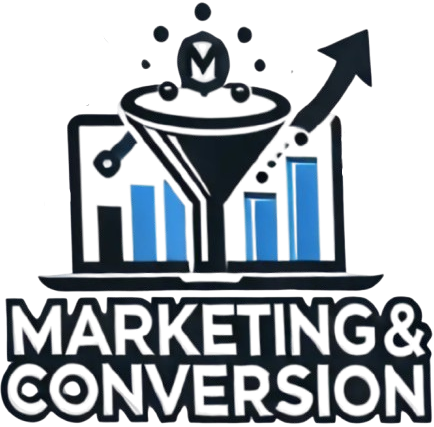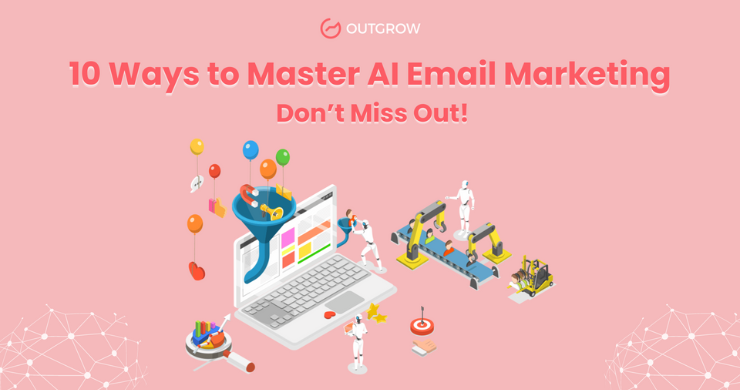
Whether your business is new or already established, PPC marketing can assist in driving sales revenue and promoting business growth.
If you don’t have experience with PPC campaigns, it can seem overwhelming. You will need to familiarize yourself with new advertising networks, understand new terminology, and go through the challenges of optimizing an ad strategy through trial and error.
Don’t worry, it may seem difficult, but it doesn’t have to be. Even if you have limited knowledge of digital advertising as a small-business owner, you can still achieve successful PPC campaigns. These campaigns can serve as a valuable means of reaching new customers.
PPC Marketing
Pay-per-click marketing, also known as pay-per-click advertising, is a form of digital marketing where you are billed solely when your advertisements are clicked. Unlike the traditional method of buying ad space for a specific duration, such as renting a roadside billboard, PPC marketing enables you to pay for ad placements based on the number of clicks they attract.
Businesses employ PPC ads to generate traffic to designated web pages, commonly referred to as landing pages, which may include pages showcasing exclusive offers, products, or services, or alternatively lead directly to the homepage.
The objective is to strategically position search ads, display ads, and other PPC campaigns within online ad space so that potential customers come across the advertisement, click on the link, and then ideally proceed to take a desired action such as making a purchase or submitting a lead generation form. Generally, these actions occur once the user reaches the landing page.
Usually, PPC refers to advertisements that are displayed on search engines through platforms like Google Ads (formerly AdWords) or Microsoft Advertising (formerly Bing Ads). Nevertheless, it is also possible to create ads on popular social media networks and other third-party platforms. These platforms manage a significant number of advertisements and allow for the utilization of PPC budget settings and optimizations.
When beginning with PPC, it is important to familiarize yourself with various types of ads.
Search ads refer to the advertisements that appear as the top results when you search on Google, Bing, or Yahoo. These ads are tailored to match the keywords you used in your search, also known as “search terms,” and are usually presented as text ads.
Display ads are graphic advertisements that are found on websites for various products and services. These ads are tailored to your interests and previous website visits through a technique called “retargeting.”
Advertisements on social media platforms (paid social): These are sponsored posts that appear in your feed on Facebook, LinkedIn, Twitter, Instagram, and other platforms for pages you may not currently be following.
Sponsored product listings are advertisements designed as click-to-purchase ads in shopping-related searches. These ads are formatted similarly to search result ads and are displayed on platforms like Google Shopping or Amazon PPC, which is also called Sponsored Products.
The price for these campaigns is based on two main factors: the number of clicks your ads get and the level of competition for specific keywords you are targeting.
Pay-per-click advertising, also known as cost-per-click (CPC) or cost-per-action (CPA) advertising, is distinct from another commonly used method called cost-per-mille (CPM). In CPM, ads are charged a predetermined rate for every 1,000 impressions they receive.
Although CPM is favored by certain publishers, PPC is generally the preferred method among both ad publishers and advertising brands due to its more accurate reflection of an ad’s value and success.
Developing and Managing PPC Campaign
The primary focus of PPC advertising campaigns in today’s market is to be able to complete all necessary steps within a five-minute time frame with a credit card. Ensure that you have your credit card, website URL, and company details readily available before starting the timer.
1. Account setup
The process of setting up an ad account is quick and simple. In most instances, you will already possess an account with the desired search engine or social network for PPC advertising. Accessing the advertising section or using URLs such as ads.nameofsearchengine.com or socialnetwork.com/ads will lead you to the ad consoles.
After logging in to your personal account, you have the option to create a company profile by including the company name and billing details. The credit card requirement comes into play at this stage, but you can actually postpone it until the launch.
After setting up your account, we suggest two important steps that may not be included in your initial “five minutes” launch and may not be immediately necessary. However, completing these steps now will enhance the effectiveness of your advertising campaigns.
Conversion tracking involves tagging your website with tracking codes, which allows advertising engines to optimize the way your campaigns are run by measuring the impact. The crucial tracking codes will be the ones related to conversion.
Audiences: Advertising engines have become more advanced and are now capable of handling audiences that are created based on your website activity as well as your client and prospect data. Subsequently, they enable your campaigns to specifically target these audiences.
If you decide not to explore these subjects immediately, make sure to return to them promptly as they will enhance the effectiveness of your campaigns. In the meantime, initiate a campaign and establish a budget for it.
2. Keyword and topical research
Keyword and topical research are required, but you may not have enough time to conduct a thorough keyword research in just five minutes. However, you can begin with a limited scope now and come back to it later. This is necessary because it is vital for your ads to be displayed in the appropriate context and in front of the intended audience.
To begin, you can utilize a free keyword tool to identify some initial keywords and build your campaign around them. These keywords should align with the question, “What words do my potential customers use when expressing a need that my service meets?”
3. Landing pages
Your home page was designed in a way that provides a clear understanding of your business, its purpose, and how users can obtain further information or interact with you if they are not familiar with your company. However, when it comes to a search campaign, directing traffic to your home page is not the ideal choice. Instead, it is more appropriate to direct traffic from your PPC campaign to a designated landing page.
Consider creating dedicated landing pages for your campaigns to enhance the user experience. However, you may already have existing website pages that are suitable for this purpose. To determine the most appropriate page for each keyword, ask yourself, “Which page would provide the best response to a search query for this keyword?”
4. Ad copy
The ad copy is the third component in your search campaign. You can opt for either a single set of ads for all your keywords or one ad per keyword. The ideal combination lies somewhere in between and relies on the similarity of your chosen keywords.
When considering each keyword or group of keywords, it is important to think systematically and rephrase the following text without altering the message. It is crucial to ask oneself: “What is the most effective message to encourage users to visit my landing page when they search for this specific keyword?” It is recommended to create four different ad variations for every ad set.
5. Bids
Setting your bids may seem like the most daunting task in your search campaign as it is the most complex to understand. PPC advertising has undergone significant changes since its inception on GoTo.com, where bids were determined through an incremental auction. The higher amount you were willing to pay, the better visibility you had in search results.
Google introduced a significant addition to its advertising engine known as quality score, which is now found in most advertising engines. Each ad is assessed and given a score based on its relevance to the search keyword.
The higher the quality score and the better the fit, the lower the bid needed for your ad to appear on that keyword. The advertising engine might suggest a maximum CPC for your campaign or keyword. It is possible to use a lower bid than the recommended bid. However, a max CPC only signifies the maximum amount you will pay for a click.
To determine the actual cost of a campaign, take into consideration competitors, quality score, and user demand. Use the question, “What is the highest price I am willing to pay to bring a qualified visitor to my landing page for this keyword?” to set bids as a limit.
6. Campaign launch
If you have not entered your credit card details in step one, now is the time to do so before launching. Take a deep breath as your five minutes are almost over, and then proceed to launch your campaign. It is important to note that campaigns usually do not go live right away.
There may be verifications required before your campaign is activated, depending on the ad copy, business sector, and keywords. During this time, you can consider revisiting aspects that you may have approached too superficially.
7. Monitoring and optimization
You usually wait for a day before reviewing your reporting. This duration allows the campaign to commence and gather adequate data to truly comprehend the situation. The outcomes might not align with your initial aspirations. However, the positive aspect is that you can enhance them continuously. One of the primary tasks to focus on is the inclusion of negative keywords to eliminate irrelevant clicks.
After evaluating the match between your keywords and ads, you could consider testing different ad variations to gauge their performance. Select one of the keywords that is generating traffic to your website and try to view your site from the user’s perspective.
To improve the user journey, you should follow these steps: first, type the keyword; then, look at the ad; after that, visit your website. During this process, take note of any areas that could be improved. Additionally, it is important to consider the target audience, conversion tracking, and the use of customized landing pages.
Tips for launching your first PPC campaign (for beginners)
Once you have selected a PPC network and gathered the necessary PPC tools, you can proceed to start your first campaign. Regardless of the network you choose, adhere to the following fundamental steps:
The importance of defining the goal of your ad cannot be emphasized enough. Your end goal largely dictates the decisions you make throughout the process of building a PPC campaign.
To start benefiting from these solutions, integrate your PPC campaign manager with SEMrush, CallRail, or other tools that support your PPC campaigns.
In order to maximize your incoming traffic, conduct keyword research to identify target keywords that are relevant to your audience, have enough volume to reach an online user base, and are priced right.
When conducting keyword research, it is important to consider the cost per click of your keyword. This will help you optimize your budget and avoid overpaying for keywords that may not be effective. Additionally, it is necessary to review and identify keywords that do not align with your goals, known as “negative keywords”.
Create persuasive advertising copy and a powerful call-to-action. Include additional elements like visual imagery for display advertisements, if necessary.
To enhance the performance of your ads, incorporate your keywords into your ad copy alongside a clear call to action (CTA). Include action-oriented phrases like “learn more” or “start today” to induce a sense of urgency and prompt your audience to take action. CTAs have been proven to significantly boost your ads’ click-through rate, which refers to the percentage of clicks received per view.
Before launching the campaign, it is important to link the ad to your preferred landing page and check if the landing page is optimized for your campaign. It is crucial to ensure that the call-to-action (CTA) on the landing page matches the CTA in the ad.
Before launching your campaign, it is important to double-check your budget and ensure that the correct budget amount has been chosen. Once the advertisement is prepared, you can proceed with making your campaign live.
To ensure success, continuously monitor the results of your campaign, gain insights from the data, and make necessary optimizations. Throughout your campaign, utilize PPC tools and a campaign manager to track results and identify both strong and weak areas. Utilize this feedback to guide improvements that will enhance future PPC ads and boost your overall performance progressively.


